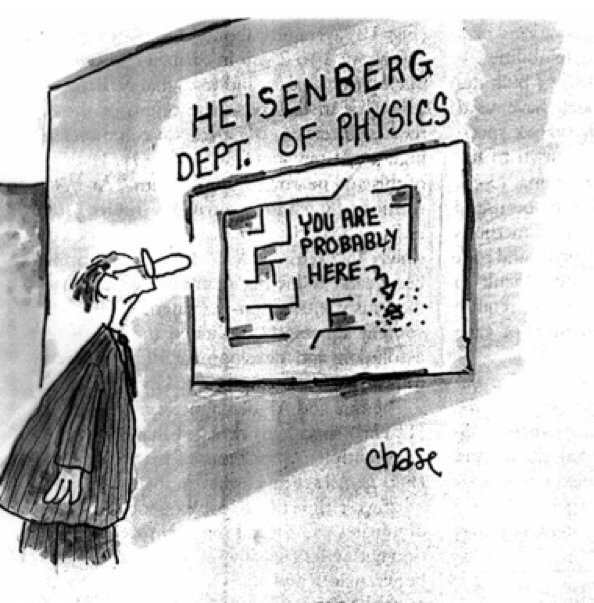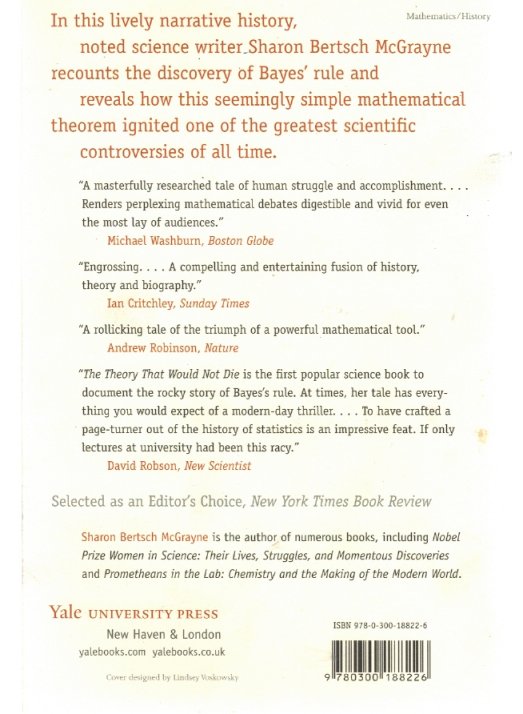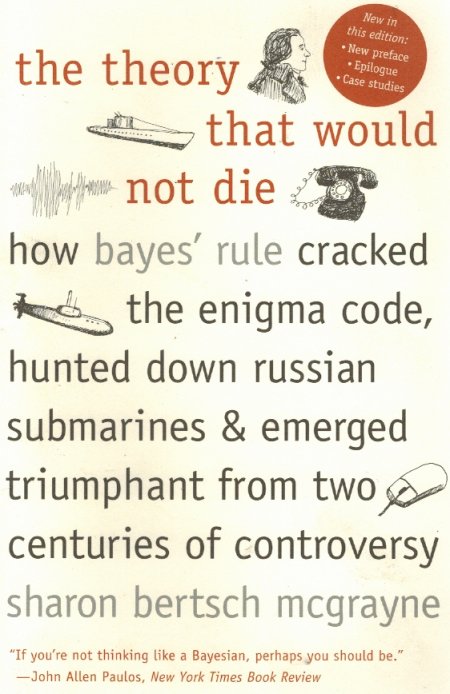-
Posts
18316 -
Joined
-
Last visited
-
Days Won
104
Content Type
Profiles
Forums
Events
Everything posted by studiot
-

Astrazeneca covid vaccine clotting anomaly
studiot replied to StringJunky's topic in Microbiology and Immunology
Why or in what way is it a point worth discussing ? -

Where is the core principles that govern mathematics?
studiot replied to Alex Mercer's topic in Mathematics
Hello again Alex, I thought you had abandoned this thread. I didn't suggest Aline was looking for the same thing as yourself, just that there were some ideas and information there that would be relevent and useful to your question. So back to your question. I am sorry to tell you that not only does it not exist but it is impossible for it to exist. Just a little bit of history, then some references to what can be obtained (and appreciated) by someone with your stated mathematical background. As the 19th century turned into the 20th four of the top mathematicians in the world tried to do exaxactly what you are asking. All four failed for different reasons. The first two worked together to try to produce a book which took its inspiration from Newton's famous Principia for Physics and was to be the equivalent for Mathematics, So they called it Principia Mathematica. Their book was produced and was indeed a massive effort and success, it was not comprehensive. But by this time the scope and depth of Mathematics had grown so much that it was well beyond two people to comprehend it all, let alone one. And Mathematics was, and still is, growing at an ever accelerating pace. The two were Russell and Whitehead. Meanwhile Klein had introduced the Erlangen Program which married geometry and algebra in an axiomatic way updating Euclid. https://en.wikipedia.org/wiki/Erlangen_program And Hilbert attempted to build on this to provide an axiomatic basis for all of Mathematics. https://en.wikipedia.org/wiki/Hilbert's_program Then along came Godel in 1931 who published (over a period of time) his completeness and incompleteness theorems. He had proved that questions could be posed for all system of axioms as complicated or more complicated than simple arithmetic, questions that could not be answered within the system. https://en.wikipedia.org/wiki/Gödel's_incompleteness_theorems With reagrd to you desired book list I would recommend the following What is Mathematics, and elementary approach to ideas and methods By Courant and Robbins Principles of Mathematics By Allendoerfer and Oakley Unknown Quantity By John Derbyshire Discovering Modern Algebra By Gardner A survey of Modern Algebra By Birkhoff and MacLane From Geometry to Topology By Graham Flegg Introduction to Topology and Modern Analysis By Simmons Beginning Logic Lemmon Elementary Geometry By Roe Note this selection is far from comprehnsive, huge areas of maths are omitted entirely eg statistics and numerical methods theory. But they will take you from the classical high school notation to modern notation, without which knowledge you would be struggling. They would also lay a foundation for further studies at higher level. -
The correct term for 3D is a ball not a disk. Disks are 2D. What you then describe doesn't actually work and all you have done by moving from 2D to 3D is make it a bit more complicated. Essentially you talking about a 3D ball travelling along a fourth axis. Yes this could be a valid picture, but that fourth axis cannot be time if the ball is 'travelling' since the act of travelling involves change of space with respect to another quantity called time. Just the same as if we consider a disk strung on a necklace and travelling along it. You will always need that extra different axis to describe the universe we live in and experience. Just as beecee sort of indicated. So if you want 4 space axes for some reason, you must still have another one called time.
-

Why do people use Bayesian methods?
studiot replied to To_Mars_and_Beyond's topic in Applied Mathematics
Then I would say you don't fully understand probability. -

Heisenberg's uncertainty principle for dummies?
studiot replied to To_Mars_and_Beyond's topic in Quantum Theory
I'd just like to point out the Heisenberg's Quantum mechanics is a matrix - energy formulation, not a wavelike differential equation. This thread is about Heisenberg QM. https://en.wikipedia.org/wiki/Matrix_mechanics -

I am trying to learn some basic mathematics (Pre-algebra ) and Algebra
studiot replied to bayukutten's topic in Mathematics
That's an unusual combination and spread of subjects. Alligation is used in Pharmacy for instance. Thre will be lots of 'word problems' where you have to extract the relevent information from the text to peform some calculation or deduction. -
Wherever the water originally came from, fossils of marine life in the Himalayas etc are not evidence of total submergence, just of earth movements. The "land" as you call it ie dry land is technically called continental crust. There are two types of crust, continental crust and oceanic crust (which is the sea bed rock at the bottom of the sea) The oceanic crust is densier ('heavier') and the continental crust is lighter so 'floats' on top. It has been piled up by successive earth movements to heights that would not be all submerged by all the water on Earth. A simple test would be to estimate the rise in sea level if all the water from ice and the air were to be dumped on the ground. This would be less than 100 metres, yet there are mountain ranges many thousands of metres high. Clearly these would not be submerged.
-
Clearly the answer is no, time is not linear. I liked both the answers given so far, +1 to dimreeper and bufofrog. Just to add that perhaps linear is the wrong word for what I think mean. I think you mean homogeneous, which is the posh scientifc way of saying that every second of time is the same as every other second. Scientifically linear means something other than lined up or in a line. It refers to some very specific mathematical properties. So specific that even most straight line graphs are not linear!
-

Heisenberg's uncertainty principle for dummies?
studiot replied to To_Mars_and_Beyond's topic in Quantum Theory
It is a question of mathematics, not physics. Or more exactly it is a question to the application(s) of Mathematics in Physics. It occurs because of the dfference between addition and multiplication in mathematics. In Physics, if you take two quantities say length and width and add them together you still have the same physical quantity, viz a longer length. But if you multiply them together you generate a new quantity viz area. It may be that the two quantities have different physical significance, for example 10 miles per hour and 3 hours. Mathematically you can add 10 and 3 without a problem. But you cannot add 10mph to 3hours in Physics and obtain anything sensible. But you can multiply them, and obtain a new quantity 30 miles, which is different from either of the original quantities. An uncertainty principle applies when the two quantities are distributed or spread out to some extent along their scale. To go back to my area example it does not matter which order you multiply the pair of quantities you will arrive at the same answer. So length x width = width x length = the area and the uncertainty is zero. Or there is no difference between A x B and B x A or (BA - AB) = 0 (BA - AB) is called the commutator of this product AB If one of the quantities being multiplied has an extent in terms of the other quantity this commutator will not in general be zero. It's easier to understand this last sentence in Heisenberg's original pair viz position and momentum. In order to answer the question "what is the momentum of a particle when it passes point x?" you have to answer first the question "Which part of the particle passes x ?", since it does not all appear at x at once. Does this help ? -
Timo is correct, (+1) to ask where the water would come from. There is not enough water on the planet, even if all the ice melted and all the atmospheric water fell out of the sky, to cover the entire surface.
-

Heisenberg's uncertainty principle for dummies?
studiot replied to To_Mars_and_Beyond's topic in Quantum Theory
Neither of these. Just simple classical mechanics. Classically when we talk of the postion of an object we mean the position of its centre of mass. Now take an old fashioned balance scale with a rider or slider. At what point on the balance arm is the rider's weight applied ? The rider has physical dimensions with a leading edge, a trailing edge and a COM somewhere in between. So the question arises "Where do we pinpoint the application of the rider's weight?" The leading edge, the trailing edge, the COM ? For most of the length of the balance arm the COM is exact. But as the leading edge begins to pass over the knife edge, this chages introducing uncertainty. This question of where does it start and where does it end and at what point between do you apply the second variable is, as already noted, the basis of the HUP. There are also classical wave packet systems that act in this manner. The Fourier transform, swansont mentioned doesn't only apply to quantum theory. -

Why do people use Bayesian methods?
studiot replied to To_Mars_and_Beyond's topic in Applied Mathematics
But have you seen this one ? So what does a probability, P(E)=1 , of 1 mean ? 1) Well with a strictly a priori approach it means that E must always occur 2 Using an empirical (objective approach) it means that E has always occurred, but does not imply that E will occur in the future. 3) Using a subjective approach it means that we think E will occur, but does not mean it must occur. The last one is used by bookies to set their odds at races etc. -
No, light can be scattered by massive bodies.
-

Heisenberg's uncertainty principle for dummies?
studiot replied to To_Mars_and_Beyond's topic in Quantum Theory
Yes that is correct the HUP and Measurement effects are different phenomena. There is also a a non quantum uncertainty associated with certain classical phenomena, that is not due to measurement but arises from the same physical process as HUP. The simplest and easiest physical explanation of the HUP I know arises in spectroscopy from the energy time version of the HUP. Essentially it takes a finite time for the electron energy transition due to a photon interaction. This is observed as a small, but measurable and also calculable using the HUP, 'blurring' of the spectral lines. -

Why do people use Bayesian methods?
studiot replied to To_Mars_and_Beyond's topic in Applied Mathematics
"But are this kind of examples really very realistic?" Yes a famous example is the hunt for the Thresher. "classical statistics says that the probability of heads is 1.00 and there's no uncertainty to it" That's one way to put it. Of course there are at least three different interpretations of a probability of 1 or 0. Another interesting observation is that Bayes theory predated 'classical' theory. There is an interesting book about the history and many modern applications of Bayes theory. I will have to dig out the details for you. -
Shrug.
-
You say after introducig them in an exchange of views about probability. You then ask about heat and entropy to which I respond Nothing whatsoever to do with statistics and probability as you seem to have agreed to abandon it for the moment. But you reply which is all about statistics and probability and nothing about the offered real world of engineering. Please focus.
-
Sadly, a nice (correct) image. +1
-

Why do people use Bayesian methods?
studiot replied to To_Mars_and_Beyond's topic in Applied Mathematics
What is the probability that tomorrow a meteorite will strike New York, killing every inhabitant ? Classically this event has never happened so has a P value of zero. The probability that both Bayes and Classical theory work with is the same quantity. It is the estimation of this probability that differs, neither is 'better' than the other, each have their areas of maximum suitability. -
First and foremost swansont has already noted that Free Energy can mean different things in thermodynamics. Now in relation to available work, there is also a quantity known as the 'maximum work function' which is identified with the Helmholtz free energy. So the situation is rather complicated . In general we have processes that occur at constant temperature or at constant pressure (you can't have both at once) Gibbs free energy occurs at constant temperature Helmholtz free energy occurs at constant pressure
-

I am trying to learn some basic mathematics (Pre-algebra ) and Algebra
studiot replied to bayukutten's topic in Mathematics
If you are going for actual examinations then practise, practise, practise. 🙂 That was a good list of test factors you posted - stick with it. As a further aid I recommend looking at the Wolfram Alpha website. https://www.wolframalpha.com/ This free and allows you to type in specific mathematics questions (calculations) and then provides the answer and working. It will enable you to check your own working when you do not have the answers. Here is a screenshot of factorising a long number. When you come to factorising alegrbraic expressions rather than numbers you can put those in too. eg factorise 10x2 + 7x -15 Which comes to (2x-3)(x+5) This ability is really useful. -
I am sorry but my post didn't help. It was rather brief since you are taking someone else's thread off topic. You really should start a thread of your own about sunspots, asking a clearly phrased question about what you want to calculate. I note that sunspot occurrence is quite diffrent from comparing classic thermodynamics to psychological states as you seem to be trying to do in your free energy thread. So please choose one topic and start a new thread about it. No, entropy changes can be calculated for any system - at least in principle thought it may be difficult in practice. Yes this was the original reason entropy concept was introduced and lead to what I call classical thermodynamics. This is also the simplest and easiest to understand explanation. I can post it if you wish, it has nothing directly to do with order or probability and was introduced for engineering calculation purposes in the age of steam engines.
-
This is not the way thermodynamic entropy works. Considering your background information in your own thread about Free Energy, here is a suitable explanation of the link between 'order /disorder' and thermodynamic entropy. Consider a system and the possible states it can find itself in. Label the states a, b , c, d.........and so on. For each state assign a probability of finding the system in this state upon random inspection. So we have P(a) = probability of state a and so on. Inspect the system and find it in state x. Now consider a change of state. That is the system from state x to some other ste, say y. If P(x) < P(y) Then we say there is an increase in entropy of the system for such a change. ie a change from state x to state y. If P(x) > P(y) Then we say there is a decrease of entropy of the system for such a change ie a change from state x to state y. If P(x) = P(y) Then we say that the system is in equilibrium and there is no change to the entropy of the system. Depending upon the nature of the system there are implications or consequences resulting from such a change. Thermodynamics identifies entropy as connected with energy in the system. So the change is linked to the energy structure of the system and by inference any energy transferred into or out of the system by the change. This is true whether the theoretical approach is 'classical' or statistical. The states are energy states. It is about material things. But the same mathematical structure can appear in non material things like information technology Here we are talking about 'bits' of information. These could be marks on a piece of paper, the contents of a computer memory cell or the positions of beads on an abacus. Energy is not involved at all. In either system (or indeed in any other that follows the same mathematical structure) the probabilities are determined by the number of ways a state can occur. This is how we define 'order and disorder'. The fewer the number of ways a state can occur , the more ordered the system. Note this leads to an inverse relationship between entropy and order.
-

I am trying to learn some basic mathematics (Pre-algebra ) and Algebra
studiot replied to bayukutten's topic in Mathematics
Can I just say that I think you might be making too much of this ? The number of occasions that anyone (including mathematicians) might require to find the factors of a given difficult number in ther whole lives can probably be counted on the fingers of one hand. Further, looking at your definition of a factor I am a little worried. A factor is a number that evenly divides a given number with remainder 0. What do you mean by evenly ? I would go with the words completely or fully, but evenly is reserved for even numbers. Mathematicians don't usually bother with any such qualifier and just use the word divides on it own. The all important statement is that the remainder is zero. So as to your question, I would start by noting if the given number is odd or even (ie is divisible by 2 or not) If it is divisible by 2 then that immediately cuts your work in half since you have found one factor and halved the size of the number you are working on. After 2 comes 3, which can also provide a large reduction in the work. Do you know how to test for divisibility by 3 ? The sum of the digits are themselves divisible by 3. The next prime number is 5 and again divisibility by 5 makes a big reduction Can you tell the condions on the original given number to be divisible by 5 ? Could this number also have been divisible by 2 or 3 ? -
There is no such thing as an 'off topic' part of ScienceForums. I seriously suggest you get a full understanding of this rule before you proceed further with anything.





